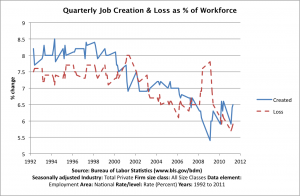Below is the body of a letter I sent to my employees today informing them of what they can expect now that Obamacare has been upheld as “constitutional”
All
Today June 28, 2012 the United States of America ceased to be a constitutional republic and is now a fully democratic fascist* oligarchy in which a tyrannical majority elect conceited tyrants that impose their will on all.
What does this mean for you as an employee? It means quite simply that health insurance rates will continue to skyrocket year over year at a 25% clip and that our only recourse is to continue raising deductible’s on the few policies we are even allowed to offer in order to keep premiums anywhere near close to affordable. To prepare for this you will be well advised to begin setting aside 10% of your gross income each paycheck into a separate account to build up a fund to cover the very high deductibles you will need to maintain in order to have some semblance of being able to afford coverage.
This is not a requirement – I am merely offering you my suggestion as to the most logical course of action to protect your own self interest given that government mandates and subsidies do nothing but drive cost of out of control (housing, healthcare, tuition – oddly all 3 have out of control costs and oddly government meddles in all 3, a coincidence? I think not). This is not opinion, this is simple economic fact that those in power simply refuse to believe, preferring to close their eyes, stamp their feet and repeat the mantra “yes we can, yes we can, yes we can” –
it is no different than jumping out of an airplane sans parachute and willing yourself not to crash into the earth… until you actually hit the earth you might believe it is working… but then reality hits you all at once.
Long term (I’m thinking 2020-2030), the government will take over healthcare and we will move to a single payer system after the “private” market becomes entirely too expensive, so naturally the government must step in to save us all.
“Gee thanks for those crutches there, oh right, you’re the one that broke my legs”.
But at least by then you will have saved up enough for medical coverage so you might still be able to afford “private” health coverage on a for cash basis so as to avoid the several month waiting list to actually even see a doctor.
Unfortunately when government steps in to take over it will likely put us and other small employers out of business as I foresee the government simply mandating that employers contribute $40-$50k/year per employee for health insurance that would go to the government – that’s in ADDITION to pay, therefore in order to recoup the cost we would have to double or triple prices and those high prices will severely if not all but eliminate the market for us… whose going to buy a $75 bottle of Marine Buffer?
So start sharpening those resumes for the eventual government job we’re all going to have, because there won’t be any others around. Think I’m overstating the case here – just look at Greece… we’re getting a preview of what is to come to us in 10-15 years… that’s how all socialist/communist/fascist countries end up. We are well on the way on the road to serfdom ( http://goo.gl/m05az )
Greg
* please look up “fascist” for yourself… it does not mean “nazi” as so many seem to believe these days – it is a form of socialism in which there is putative private ownership of business however government directs most aspects of how business is permitted to operate, thus government truly controls the business infrastructure while maintaining the illusion it is otherwise


